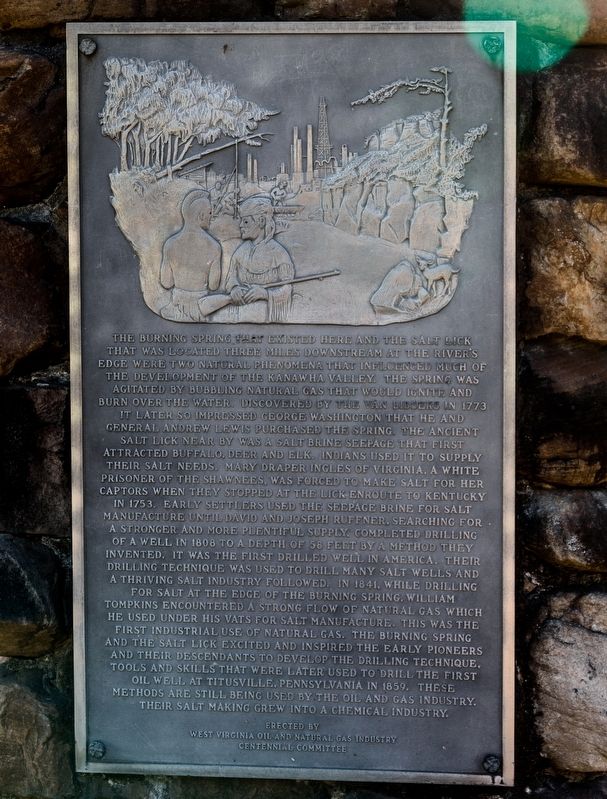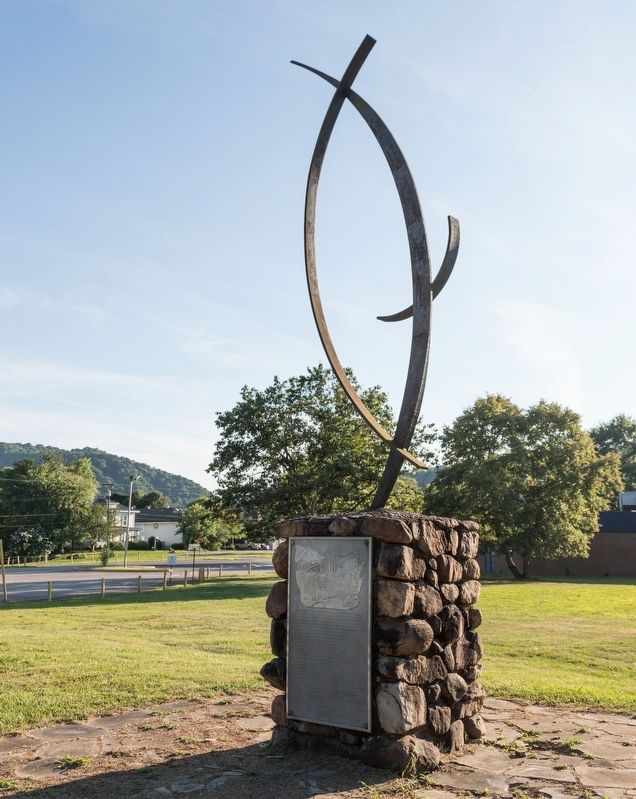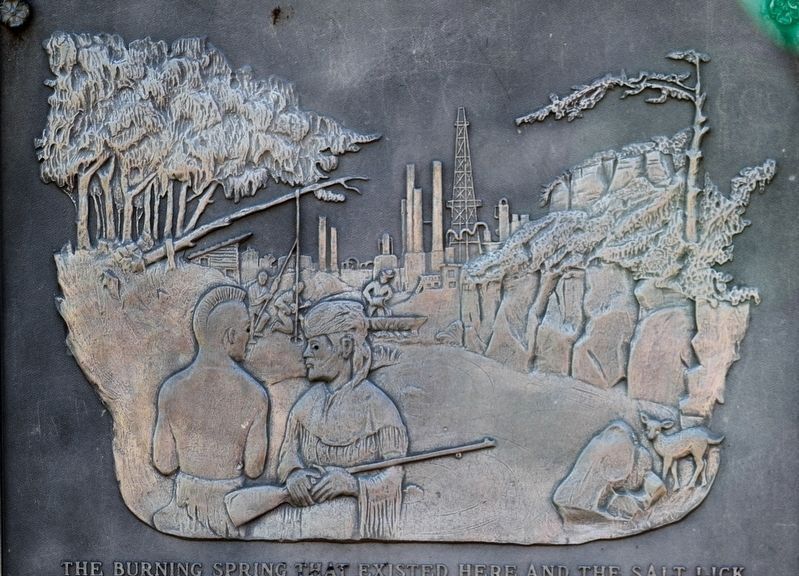Dupont City in Kanawha County, West Virginia — The American South (Appalachia)
Burning Spring Monument
The burning spring that existed here and the salt lick that was located three miles downstream at the river’s edge were two natural phenomena that influenced much of the development of the Kanawha Valley. The spring was agitated by bubbling natural gas that would ignite and burn over the water. Discovered by the Van Bibbers in 1773 it later so impressed George Washington that he and General Andrew Lewis purchased the spring.
The ancient salt lick near by was a salt brine seepage that first attracted buffalo, deer and elk. Indians used it to supply their salt needs. Mary Draper Ingles of Virginia, a white prisoner of the Shawnees, was forced to make salt for her captors when they stopped at the lick en route to Kentucky in 1753.
Early settlers used the seepage brine for salt manufacture until David and Joseph Ruffner, searching for a stronger and more plentiful supply, completed drilling of a well in 1808 to a depth of 58 feet by a method they invented. It was the first drilled well in America. Their drilling technique was used to drill many salt wells and a thriving salt industry followed.
In 1841, while drilling for salt at the edge of the burning spring, William Tompkins encountered a strong flow of natural gas which he used under his vats for salt manufacture. This was the first industrial use of natural gas.
The burning spring and the salt lick excited and inspired the early pioneers and their descendants to develop the drilling technique, tools, and skills that were later used to drill the first oil well at Titusville, Pennsylvania in 1859. These methods are still being used by the oil and gas industry. Their salt making grew into a chemical industry.
Erected 1963 by West Virginia Oil and Natural Gas Industry Centennial Committee.
Topics. This historical marker and monument is listed in these topic lists: Industry & Commerce • Native Americans • Settlements & Settlers. A significant historical year for this entry is 1773.
Location. 38° 16.194′ N, 81° 33.902′ W. Marker is in Dupont City, West Virginia, in Kanawha County. Marker is on Malden Belle Road (Local Route 60/12) north of West 34th Street, on the right when traveling south. It is on the front lawn of the Dupont Middle School, facing the road. Touch for map. Marker is in this post office area: Belle WV 25015, United States of America. Touch for directions.
Other nearby markers. At least 8 other markers are within 2 miles of this marker, measured as the crow flies. Battle of Blair Mountain (approx. 1.4 miles away); Marmet (approx. 1.4 miles away); Courage in the Hollers (approx. 1.4 miles away); Camp Piatt (approx. 1.4 miles away); Belle Works (approx. 1.9 miles away); Captain Larry F. Lucas (approx. 1.9 miles away); World War II Memorial (approx. 1.9 miles away); Corporal Victor Theodore Lake Jr. (approx. 1.9 miles away).
Additional keywords. Van Bibber
Credits. This page was last revised on February 29, 2024. It was originally submitted on August 14, 2019, by J. J. Prats of Powell, Ohio. This page has been viewed 365 times since then and 33 times this year. Last updated on February 10, 2024, by Carl Gordon Moore Jr. of North East, Maryland. Photos: 1, 2, 3. submitted on August 14, 2019, by J. J. Prats of Powell, Ohio. • J. Makali Bruton was the editor who published this page.


